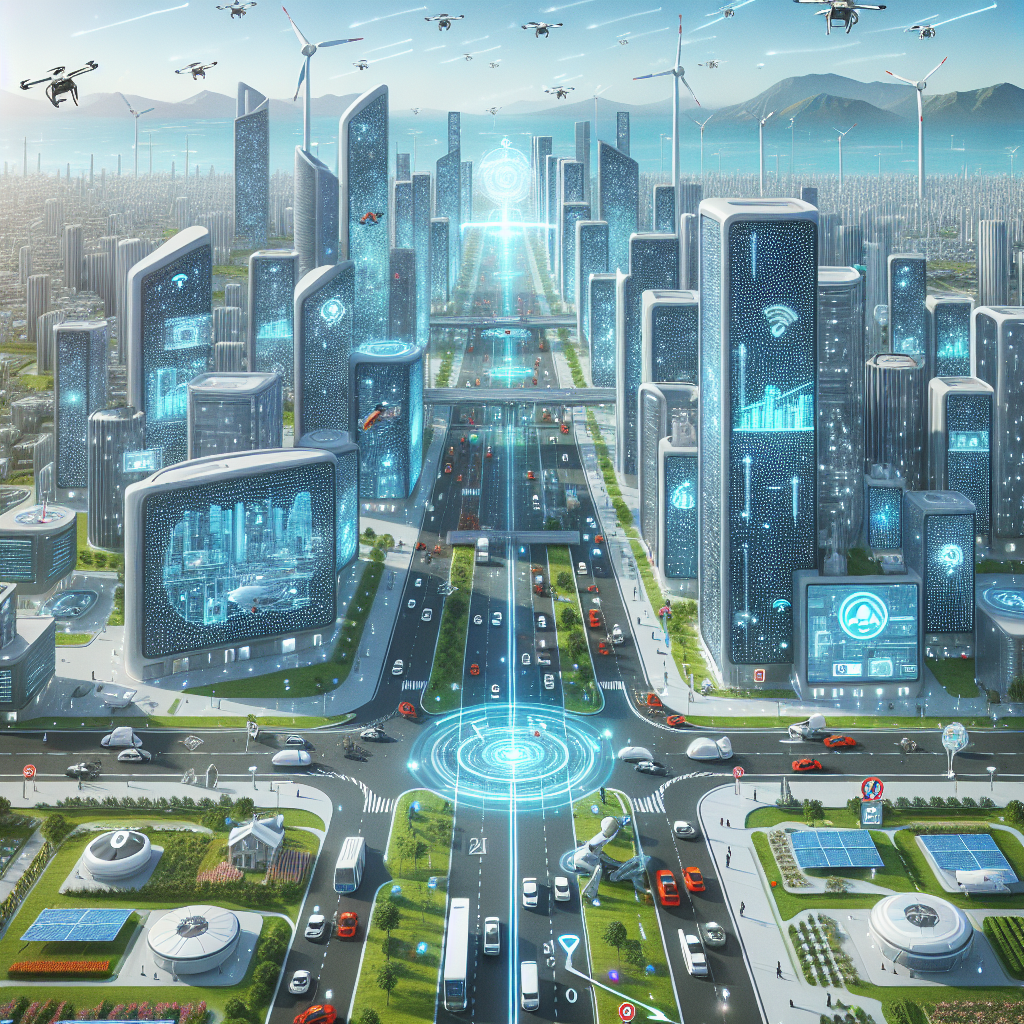**The Role of AI in Smart Cities of the Future**

Urbanization presents formidable challenges, including congestion, pollution, resource depletion, and logistical inefficiencies. AI offers a robust suite of solutions capable of addressing these complex issues head-on. One of the primary applications of AI in smart cities is in the field of transportation. Advanced AI algorithms can predict traffic patterns, suggest optimal routes, and coordinate public transit schedules, significantly reducing congestion and minimising travel times. Moreover, autonomous vehicles, powered by sophisticated AI systems, are set to become an integral component of urban transportation networks. These self-driving cars can enhance road safety, lower emissions, and provide mobility solutions for the elderly and disabled.
Energy management is another critical area where AI’s transformative capabilities are extensively harnessed. Smart grids, underpinned by AI technologies, can dynamically balance demand and supply, optimise energy distribution, and integrate renewable energy sources with greater efficiency. These systems leverage machine learning algorithms to predict consumption patterns, thus enabling utilities to operate more sustainably and cost-effectively. Furthermore, AI-powered buildings, equipped with smart sensors, can monitor and regulate electricity, water, and heating usage, leading to substantial reductions in resource consumption and operational costs.
Public safety and security are also paramount in smart city initiatives. AI-driven surveillance systems, employing facial recognition and behavioral analytics, enhance law enforcement capabilities by detecting and responding to criminal activities in real time. These intelligent systems contribute to creating safer urban environments, thus fostering a sense of security among residents.
Waste management, a persistent urban issue, is being revolutionised through AI-enabled solutions that encourage efficient sorting, recycling, and disposal processes. By analysing data from waste collection points, AI systems can optimize collection routes, reduce operational costs, and enhance recycling rates. Furthermore, predictive maintenance, facilitated by AI, ensures that urban infrastructure is maintained proactively, thus minimizing service disruptions and extending the lifespan of public assets.
The deployment of AI extends to enhancing the quality of public services. For instance, AI chatbots in municipal offices can handle common queries, reducing the workload on human employees and improving service delivery efficiency. Natural language processing (NLP) technologies enable these systems to communicate effectively with citizens, providing timely and accurate information.
Healthcare in smart cities is set to experience a paradigm shift with the advent of AI. AI-driven analytics can predict health trends, monitor disease outbreaks, and personalize medical treatments. Telemedicine, powered by AI, extends healthcare services to remote areas, ensuring broader access to quality care.
Nevertheless, the integration of AI in urban governance is not without its challenges. Ethical considerations surrounding data privacy, surveillance, and algorithmic bias must be rigorously addressed to ensure that AI deployment respects citizens’ rights and freedoms. Moreover, the digital divide remains a significant hurdle; equitable access to AI-driven services must be ensured to prevent exacerbating socio-economic disparities.
In conclusion, AI is the cornerstone of the smart cities of the future, offering transformative solutions to urban challenges. By harnessing the power of AI, cities can become more efficient, sustainable, and livable, thus enhancing the quality of life for all their residents. However, the implementation of these technologies must be carefully managed to ensure inclusivity, ethical integrity, and robust security. As we move forward, the judicious application of AI will be instrumental in shaping the urban landscapes of tomorrow.
